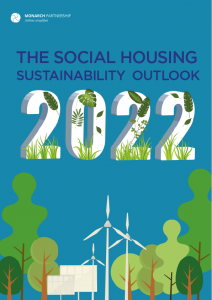TV pickup caused by the World Cup
In honour of this year’s World Cup, we look back at past England matches where a lot of information regarding viewing figures had been floating around online during 2018’s World Cup. For those of us in the energy industry, it can often lead to discussion of TV pickup. “TV pickup” is a term to describe what happens when the masses all tune in to one television programme, and then take advantage of breaks in the show to pop to the loo, or to make a quick cup of tea. Utility Week also say that opening the fridge door has a massive impact on the electricity network, perhaps even more than boiling the kettle. That half time beer you’re fetching, or ad break sandwich you’re making, means that when you open the fridge door, cold air is let out and warm air comes in, which the fridge then automatically works to replace. Replacing the air involves the fridge’s compressor chilling the air back down for an extended period, sometimes for up to twenty minutes. This, along with lots of toilets across the country being flushed at the same time – creating a bigger rush at water pumping stations – all contributes to more energy being needed from the grid at these peak times.
The largest ever TV pickup for the UK National Grid was at the end of England’s penalty shootout against West Germany in the 1990 World Cup semi-final. The pickup demand was 2800MW, which is equivalent to 933,000 kettles being switched on at the same time. In terms of actual TV views, a massive 26.2 million people tuned in to see England sadly crash out of the World Cup. As the years go by, pickup demand seems to decline, which is why 2018’s World Cup game for England versus Colombia attracted 23.6 million viewers, but only created a pickup demand of 1200MW – less than half of that of England versus West Germany in 1990. This is likely due to devices becoming more energy efficient over the years, using less electricity to power up and therefore demanding less from the grid.
How can the National Grid prepare for it?
However, it’s not only sporting events on television which contribute to this phenomenon. The Royal Wedding of Prince William and Kate Middleton in 2011 was watched by 24.5 million people around the UK, creating a pickup of 1600MW. Not only did the National Grid Energy Balancing Team have to prepare for the extra demand generated when the broadcast finished, but they also needed to be aware of lulls in the service which people may have taken advantage of, in order to grab something from the fridge or use the toilet. Every day, the team at National Grid compare the current load with corresponding days over a previous five-year period, to help them detect any patterns in the population’s energy consumption. They aim to keep the frequency between 49.5 and 50.5 Hz and use computer programmes to predict the necessary load. They also have to study television guides and take into account high demand that might come from particular soap opera episodes, or talent show finals.
As times goes on, TV pickup figures aren’t as high, due to our devices being engineered to become increasingly more efficient. This way, less pressure is placed on the National Grid and the impact of popular television events is felt to a much lesser degree. The introduction of catch-up TV services like BBC iPlayer and Channel 4’s All 4 also encourage people to watch their favourite programmes later on, or on the following day, further working to lessen the impact of big live events broadcast. The National Grid Energy Balancing Team do a great job ensuring that our supply is constant and secure, meaning that nobody has to miss that winning goal!
To see how you can control your energy and water costs and consumption, take a look at our Sector page for Efficient Cost Management. To improve your own consumption-cost and utility management reporting in general, see our 24/7 reports.
Useful links:
Monarch Explains: Demand Side Response
The Power of TV















